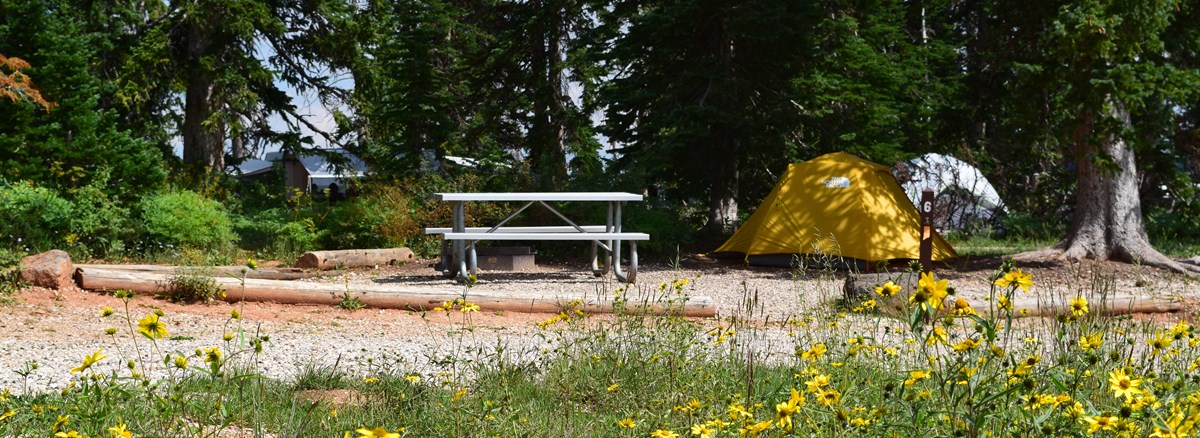New Campsites at Cedar Breaks
Ranger stations and fee booths are not the only areas that need improvement at Cedar Breaks. New volunteer campsites will also dramatically improve the park visitor experience atop the plateau. The Cedar Breaks volunteer campground was initially constructed 30 years ago, but was never completed. Park volunteers are referred to as VIPs (Volunteers-In-Parks) living up to the very important name.
Currently, there are only two permanent RV stations at the site, and the dozens of volunteers and park partners it takes to operate Cedar Breaks each season take up much-needed campsites from the visitor-paid campground. With the volunteer campsites already partially developed, this project has the opportunity to have a massive impact without further disturbing the land.
“Park volunteers and community partners like scientists from Utah State University are essential to our park operations. In busy seasons their efforts can double and even triple our capacity to operate and offer exemplary visitor services.” –Brent Everitt, Chief of Visitor Services, Cedar Breaks National Monument
The new sites are more than just RV pads. They offer NPS the opportunity to install 500 feet of new and improved sewage lines providing a necessary update to the sanitation infrastructure. The project will see new stripes and directional arrows painted onto the roadway. Park staff will also erect new wireless access points significantly improving coverage in a highly isolated area. In the center of the loop, the park service is planning a new group site to accommodate larger groups like students and professors from Utah State University and others who help with Cedar’s annual BioBlast focused on covering the diverse biology found in the region.
New campsites mean more volunteers and a more engaged, safer, and impactful visitor experience. VIPs at Cedar contribute thousands of hours of effort from Cedar’s noted summer Wildflower Festival to their high elevation night sky talks. Your donation to this project is more significant than paved RV pad sites. It enhances the National Park experience for all.

